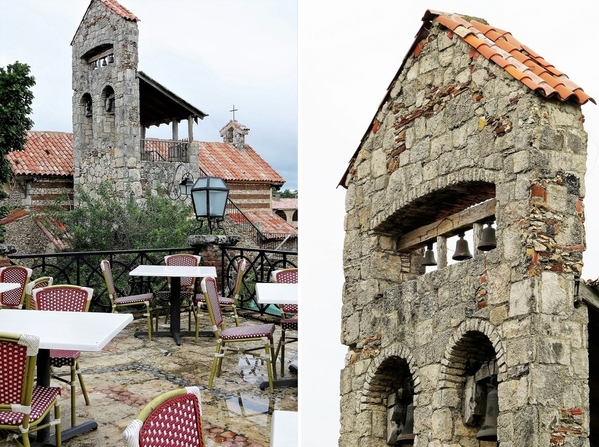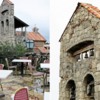Located in the hills above the Chavón River in the city of La Romana, Dominican Republic, Altos de Chavón is a meticulously crafted re-creation of a Mediterranean-style village, sculpted entirely of stone. Its narrow, cobbled alleyways, lanterns and limestone walls evoke the charm of a bygone era.
Sitting in stark contrast to the traditional Dominican architecture, the purpose-built village of Altos de Chavón was conceived in 1976 by Dominican architect Jose Antonio Caro, Italian master designer and cinematographer Roberto Coppa, and American industrialist Charles Bluhdorn.
A mountain had to be blasted for construction of a nearby road and the trio had the idea of using the stones left over from the blasting to re-create a 16th-century-style Mediterranean village.
The village was completed in 1982, thanks to the efforts of a small army of regional artisans who handcrafted the buildings using era-appropriate techniques, including woodworking and stone-cutting, to make them as authentic as possible.
Charles Bluhdorn's daughter, Dominique Bluhdorn, founded the Altos de Chavón Cultural Centre Foundation, a platform for arts and culture education, and I believe she remains its president to this day.
We stumbled upon Altos de Chavón by chance while on a shore excursion from a Caribbean cruise and could easily have missed it. It wasn’t very well publicised at the time, but hopefully that is no longer the case.
The highlights of the village include a scenic, historic church and a wide, stone amphitheatre that can seat around 5,000 visitors. There are also bars, restaurants and shops. At night, the setting becomes even more magical with romantic lighting on the stone plazas and dining verandas overlooking the Chavón River 91 metres (300 feet) below. The village also overlooks the Dye Fore golf course of Casa de Campo, the resort community of which Altos de Chavón is a part.
The picturesque St Stanislaus Church, named after one of the patron saints of Poland, also offers stunning views over the Chavón River. It’s a popular wedding venue with one of its most celebrated couples being Louis Alphonse, Duke of Anjou, and María Margarita Vargas Santaella, who were married here in 2004.
In front of the church is an archaeological museum with an extensive collection of pre-Columbian Indian artifacts discovered in the surrounding area. As well as displaying its permanent exhibition, the museum organises guided tours, temporary exhibitions and workshops.
With its cobbled streets and buildings in coralline and terracotta stones blocks, it has become a cultural centre in the region. It’s a meeting point for different kinds of art, where artists’ studios, handicraft workshops and art galleries are located.
There is also an art school located in the resort devoted to making sure that new generations of artists and artisans will learn their craft in the area.
Altos de Chavón School of Design was founded in 1983 and is affiliated with Parsons School of Design in New York City. Headed by a Parsons-trained dean, classes are taught in Spanish by an international faculty of noted scholars, artists and designers from the US, Latin America and Europe.
Chavón’s curriculum was designed by Parsons and has been continually monitored and updated by its faculty to reflect the impact of changing technology and the demands of globalism in the 21st century. Under the agreement with Parsons, students can undertake two years of study at Chavón and then complete their third and fourth years at Parsons’ New York campus to graduate with a Bachelor of Fine Arts degree.
In addition, Chavón offers a broad selection of workshops and courses for adults and children throughout the year under the Continuing Education division.
As I mentioned in the opening paragraphs, the village – and the entire resort for that matter – displays quite a contrast to the surrounding countryside. It’s like being in another world and once you leave it, you’re back to the reality of another relatively poor country in the Caribbean, despite tourism and some economic growth. The following pictures demonstrate the contrast.
If you are ever in this part of the world, don’t miss the opportunity to see the stunning village of Altos de Chavón.
Photos © Judy Barford







Comments (2)